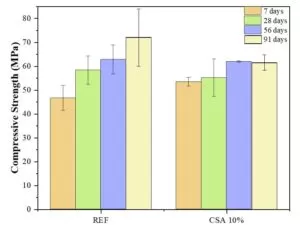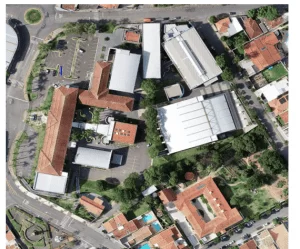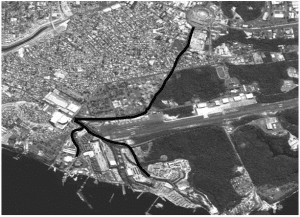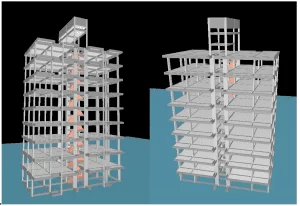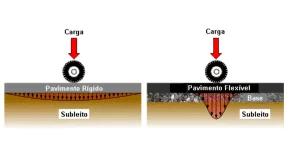PENELU, Willian Canário [2], MARTINS, Júnia Mara Dias, DEMUELENAERE, Rafael Gerard de Almeida [3]
PENELU, Willian Canário Penelu; et.al. Major Misconceptions in developing Urban paving Budget Worksheets in the town of Juazeiro/BA. Multidisciplinary Core scientific journal of knowledge. 03 year, Ed. 06, vol. 04, pp. 23-35, June 2018. ISSN:2448-0959
Summary
On the lack and the growing demand for infrastructure works, the present work presents the main existing faults in the preparation of budget spreadsheets related to urban paving in the town of Juazeiro/BA in the year 2015, as well as a comparison of the worksheet used for a bid with a better prepared, and your financial impact. Presents a brief description of the basic layers of a paving service with their respective concepts. The work focuses on show the main misconceptions in the preparation of budget spreadsheets of bidding processes so that government agencies can deliver works with higher quality, on the basis of compliance with the technical standards all the time, but with costs and acceptable time limits without burdening recklessly and unpredictable public coffers.
Key words: Budget Worksheets, Urban Paving, bidding, Juazeiro/BA.
1. INTRODUCTION
Public works, to be hired, undergo a process that encompasses four stages: planning, bidding, contract and performance of the contract. If I were to highlight one of these steps as more important, the planning stage would be more relevant (AMARAL, 2006). Yet as Name Amaral (2006), the planning stage for the execution of public works covers the development of a basic design, because, according to the art. 7, (I) and (2), (I), 8,666/93 law, without the elaboration of basic design, there can be no bidding. The art. 6, IX, of the same law outlines the elements that all basic project must submit; resolution 361 of the CONFEA admits a margin of inaccuracy of project, more or less, 15%.
In fact, we have repeatedly with basic design badly drafted, incomplete and sometimes outdated. According to the Judgment 2155/2015-TCU-Plenary, there are device in 8,666/93 Law that makes the procedure prior to the existence of a basic design appropriate, but the non-compliance with this rule is still quite applicant in hiring Federal Administration. When this occurs, the public administration to see if, in the performance of the contract, in front of a problem. Such a problem can be fixed together with the construction company, owner of the contract, to be prepared the Executive project; or in many cases the contractor quit performing the work, which at this point has already been initiated, and could even be in early stage of implementation (AMARAL, 2006).
The bad preparation of basic design can trigger serious consequences, both for the contractor (public administration) and the contractor (Builder) and for the local population. According to the Judgment 2155/2015-TCU-plenary session, based on information from 1,188/2007 Judgment-TCU-Plenary, the lack of planning of the works carried out with federal resources is the second leading cause of interruption of works shown, representing in tono of 10.25% based on the sample used. In the planning stage, one of the main existing faults in the basic design is precisely the budget worksheet. This, being badly drafted, can distort very real values and quantitative needed for execution of the project bid for both more and less, and in both scenarios there is damage to the public administration.
This study aims to identify the key mistakes in the preparation of budget spreadsheets urban paving bidded on city of Juazeiro-BA, in the year 2015, and its aftermath. To this end, we describe the most significant and common layers on paving; We identify the most recurrent errors in the preparation of the budget worksheet related to such steps; and we compare financially a same service budget worksheet bid with a budget worksheet preparation level higher.
It is important to highlight that with the growth of cities, leading to the increased distances between sites within the same locality, urban mobility has been a fairly criticized for population. Most workers today spend too much time in traffic moving to various places, whether it be for work or to get the kids in school or to study. In this new scenario, increasingly, the population comes demanding urban routes that allow the shifting of more safe and comfortable.
In this context, bids with paving object have become frequent in several municipalities of Brazil. According to data of IBGE, based on the 2010 census, the city of Juazeiro/BA has an estimated population of 221,773 inhabitants and only 10.4% of urban households on public roads has appropriate urbanization (presence of sewer, sidewalk, paving and curb). According to the IBGE, if we compare this percentage with other municipalities in the same State and of Brazil, the city of Juazeiro/BA is in position 131 of 417 and 2,755 of 5,570, respectively, which justifies the research presented here as social importance and for the area of urban road engineering.
2. Development
2.1 asphalt pavement
As Name Bernucci (2008), the road engineering subdivides the floor structures as the rigidity of set, and may be rigid, flexible or semirrígido. The hard pavement, consisting of concrete plates (armed or not), is usually supported on the subfloor consisting of granular material or material stabilized with Portland cement, seated on the subleito or on the enhancement of subleito, if necessary ( Figure 1).

To Name Andrade (year), the semirrígido pavement is coated with asphalt layer and chemically stabilized (lime, cement).
Yet as Bernucci (2008), the flexible pavement, consists of a superficial layer of asphalt coating, supported on base, sub-base, subleito and subleito, consisting of granular material, soil or soil mixture. In Figure 2 it is possible to observe the typical section of the layers that make up the flexible pavement.
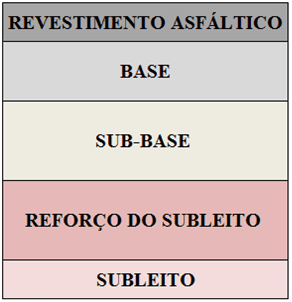
According to Andrade, the settlement of subleito is performed to correct flaws or conform the old bed of the existing dirt road. Such an operation must conform to certain widths and dimensions on the excavation settlement service, generally includes cutting or landfills with thickness of up to 20 cm. For the author, the strengthening of the subleito it is the granular layer of flooring, with variable thickness, set according to the scaling of the pavement, whose purpose is to improve the load-bearing capacity of the subleito. Will be performed on the subleito, properly compacted and regularised.
The subfloor is a layer of flooring, complementary to the base and with the same functions of this, executed on the subleito or the subleito reinforcement, properly compacted and regularised. (NORMA DNIT 139/2010-ES. Paving-Sub-stabilized base granulometricamente-Service Specification).
The base is the paving layer designed to resist vertical efforts from the vehicles, distributing them properly to the underlying layer, performed on the subfloor, subleito or reinforcement of the subleito properly settled and compacted. (NORMA 141/2010 – DNIT. Paving-stabilized Base granulometricamente-Service Specification).
In the definition of Andrade, flexible flooring consists of bituminous materials and aggregates Association, being that this association can be done in two ways: penetration or mixture. According to the magazine urban infrastructure-projects, costs and construction, machined hot bituminous concrete is the most widely employed in Brazil. It is the product of the mixture of aggregates of various sizes and asphalt cement, both heated in previously chosen temperatures as a function of the viscosity-temperature characteristic of ligand. According to the magazine, more than 90% of paved roads in Brazil are asphalt coating.
2.2 budget Worksheets for execution of asphalt pavement
Commonly, in drawing up budget worksheets for asphalt paving work is used the reference sheet provided by the DNIT, based in SICRO (Benchmark Costs of system works). However, when we leave for asphalt pavement of urban roads, the most used is that of SINAPI (national research System costs and construction Indexes), given by the Caixa Economica Federal.
Popularly known as SINAPI, the national research System of costs and construction Indexes was nominated initially by Decree 7983/2013, which lays down rules and criteria for establishing the budget of works and services reference Engineering, contractors and executed with the Union's budgetary resources for reference. The SINAPI is maintained by Caixa Econômica Federal and has banks of inputs, service compositions and reference budgets, which are updated and made available by electronic means, to the public consultation on a monthly basis. (Box, 2017).
When we left for the execution of the services of asphalt pavement, it is common to be divergence of quantitative values and of the services provided with the budgeted. The basis for drawing up a budget worksheet with minimal differences budgeted services with the run in the field is the technical knowledge of the stages of the service which is being budgeted. In the case of paving, the knowledge of the section and of the materials used in them is crucial for drawing up the budget.
2.3 Main errors
The paving is a branch of civil engineering that must be treated in a specific way. Proportionally, the companies that work with paving, asphalt paving in particular, are fewer in number than those working with vertical construction, which is the most common. Before that, most professionals of civil engineering does not have direct contact with the execution of the related service, not knowing in more detail the peculiarities of paving services.
We can say that the lack of specific knowledge of the stages of paving services associated with the lack of knowledge of the analytical composition of reference tables used in the bidding are the main causes for the occurrence of errors frequent in the composition of paving budget worksheets.
2.3.1 Omission of items and quantitative calculation
The omission of items is the most common error and impacting financially in the preparation of spreadsheets. The reference sheets, in particular the worksheet SINAPI, which is used as the basis of urban bids, have primary and secondary services. We can say that the core services have a lot to do with the direct object of implementation, while the minor are steps necessary to ensure that the main object to be executed — that is, main service is the set of secondary services and their their inputs.
Often, secondary services depend on additional steps, however, to identify this need, or not, is only made through knowledge of the analytical composition of items. Once identified the need for additional tasks, if necessary the inclusion of these items in the budget worksheet. When these inclusions are not performed, we say that there is omission of items.

Analytic composition is nothing more than an indication of the set of inputs and services, with their respective quantities necessary for realization of a unit of a given work. On the basis of the analytical composition of the service shown in Figure 03, we can identify if there is a need for some additional activity for the implementation of the same.
- INPUT-370-CODE medium Sand Deposit Station/provider (Withdrawn in the Deposit, without transportation).
- INPUT-4720-Hardcore CODE no 0, Or Gravel (4.8 to 9.5 Mm) Post Quarry/supplier, Without shipping.
- INPUT-4721-Hardcore CODE n. 1 (9.5 to 19 Mm) Post Quarry/supplier, Without shipping.
- INPUT – 41899 CODE-bulk Oil asphalt cement (CAP) 50/70 (Collected In ANP Box Plus GST).
Based on the details, we can identify three of the items in the analytical composition represented by Figure 3, in these cases related to inputs, does not include freight/transport; In addition to an item that, although not explicitly inform the lack of freight, informs the source of collection. Soon, the search in the source will be referred indicated that freight not included in the input source-destination. In these cases, it is essential to include additional items concerning transport budget spreadsheets that are in the same situation for the item shown.
In possession of the understanding of what is an analytical composition, is shown in Figure 4, a bid from the city of Juazeiro/BA in the year 2015 and then will be shown in Figure 5, the same worksheet in a more detailed elaboration by identifying the items omitted and the financial impact that these errors can lead to public coffers.
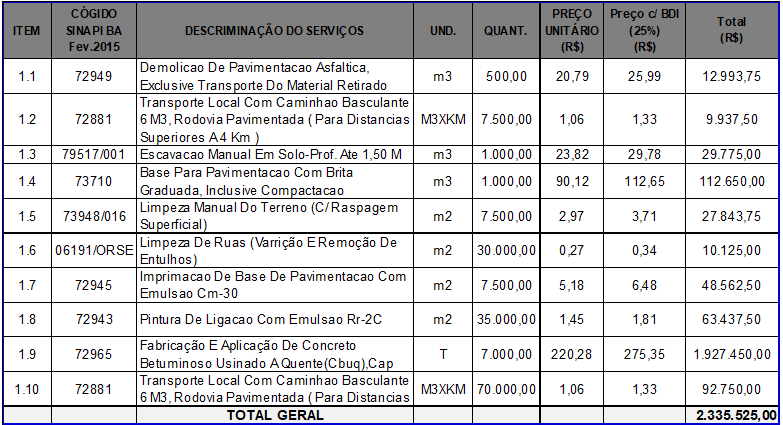

Comparing the two worksheets in figures 4 and 5, we realize that in the second are items that have been omitted in the bid. We note that, generally, this omission is related to items associated with transport. We note also a greater value difference, around £ $274,080.56 (274,000, 80 and 56 cents), which represents the percentage of 11.74% in relation to the bid sheet.
The items linked to transport, despite being the most frequent omission related budget spreadsheets, aren't the only ones excluded services budgets. While the omission of transport related items has as main cause the lack of knowledge of the analytical composition, the omission of the other main items cause the bad design, which usually arises from the lack of knowledge detailed characteristics of the place where the service will run. As an example, we can cite errors related to the deployment of additional works of paved streets, in particular the deployment or recovery of sidewalks for pedestrians.
Many of the paved streets in cities already have, even if so precarious, additional works as the gutter, curb and sidewalk. Facing this situation, when you deploy or retrieve an existing floor, the ancillary works must also be reviewed and normally go through the inclusion of hidden services in budget worksheet to be bid.
In the case of the implementation of the sidewalk, are usually used only the main service and, when composing the worksheet, not always taken into account, many times, existing rides that are to be demolished to be recomposed after-once demolished, the rubble has to be used, it has to be loaded and transported. By not putting the demolition phase of the sidewalk, other two services consequently will be omitted. Depending on the extent and volume of additional services, they may cause a financial impact of value proportional to the main object of the bid sheet.
The existence of this type of omission, arising from the lack of knowledge of the real steps to be performed, can occur with multiple items of the same worksheet and can bring big problems to the public machine, compromising many times the quality of the service and, in many cases, the completion of same.
Another recurring mistake is the quantitative calculation, that has as main causes for the development of projects without knowledge of the actual characteristics of the place where will be held the execution – knowledge of the distances of the materials to be used, the characteristics of the materials, the stages of the process of paving, among others. As an example, we can cite the failure of transport calculation related to material from deposits of gravel. Generally, the transport of this material has as unit used (m3 * km), and have three factors involved in the quantitative calculation. We have the volume of the material given in m3, the blistering factor of the material and the distance between the bed and the location of work given in kilometers.
Blistering is a characteristic phenomenon of the soils which occurs for your volumetric expansion to be excavated, this expansion is possible due to the introduction of air in the voids. The volumetric expansion is considerable in some cases, a fact that makes it important in earthwork and, mainly, in the service of transportation of material. After the disassembly, the solo takes, therefore, loose volume (Vs) greater than it was in your natural state (Vn) and, consequently, with the specific mass (γs) corresponding to the material released, obviously less than the natural density ( γn).
When composing the worksheet in the bidding, the organs normally determine the material to be used, however, they don't know where they are from and what are the real characteristics of the materials to be used. With this, it is common to make mistakes in the calculation of transport because they can't define the actual distance of the materials to be transported, nor the material-specific blistering factor.
Final considerations
The errors in the preparation of the budget worksheets on urban paving area occur in most spreadsheets bidded. These errors bring impacts on financial planning, the budget itself, in the lead, the quality of the work and, often, on infrastructure, when the works are unfinished. With the growing demand of the urban paving object to the city of Juazeiro/BA, the trend is that there is no increase in the number of bids with this object, which is worrying, because we assume that the negative financial impact tends to grow in the same proportion.
The development cannot be stopped, however, because of the existing faults. From the moment that the Government agencies see a bidding process and their respective works as an engineering project in fact to use project management techniques for each specific case, be able to manage all the activities and relevant factors involved in the process, may identify failures before they cause future impacts.
In parallel with the implementation of management techniques should be reviewed the necessary requirements for the approval of projects urban paving, we need to better understand the causes of mistakes and, with possession of information, reset the process for the approval of projects to be tendered.
Of course, it is often necessary to a certain financial investment, however, the elimination and mitigation of failures will enable the public offer and deliver works with higher quality, on the basis of compliance with the technical standards always in accordance with the law 4,150/1962, resulting in medium and long term, a higher return of works performed by the municipality.
Bibliographical references
AMARAL, Antônio Carlos Cintra. The importance of the Basic project in the hiring of public works. Federal University of Paraná (UFPR). Available at http://www.dtt.ufpr.br/Pavimentacao/Notas/MOdulo%201%20-%20Introducao.pdf. Accessed on 12 January 2017.
ANDRADE, Furtado Henry Mario. Introduction to paving. Federal University of Paraná (UFPR). Available at http://celc.com.br/pdf/comentarios/c2006/c140.pdf. Accessed on 10 January 2018.
BERNUCCI, Baby Liedi et al. (2008). Asphalt pavement basic training for engineers. Rio de Janeiro, Petrobras asphalt.
BRAZIL, Law n. 4,150, November 21 1962. Imposing the compulsory scheme of preparation and compliance with the technical requirements in works contracts and purchases of public service of direct execution, granted, agencies or of mixed economy, through the Brazilian Association of technical standards and other arrangements. Available at https://www.planalto.gov.br/ccivil_03/leis/1950-1969/l4150.htm. Accessed on 19 February 2018.
BRAZIL, Law n. 8,666, of 21 June 1993. Regulating art. 37, item XXI, of the Federal Constitution, establishes standards for tenders and contracts of the public administration and other matters. Available at http://www.planalto.gov.br/ccivil_03/Leis/L8666cons.htm. Accessed on 12 January 2017.
Box, 2017. Methodology of elaboration and maintenance of reference budgets. Buildings – version 1. Available at: http://www.caixa.gov.br/Downloads/sinapi%E2%80%93metodologia-orcamentos-referenciais/Metodologia_Orcamentos_Referenciais_MAR_2017.pdf. Accessed on 12 December 2017.
CONFEA, n. 361, of 10 December 1991. The basic design concept in consulting engineering, architecture and Agronomy. Available at http://normativos.confea.org.br/ementas/visualiza.asp?idEmenta=409. Accessed on 13 January 2017.
Blistering. Available at: http://www.ecivilnet.com/dicionario/o-que-e-empolamento.html. Accessed on 10 January 2018.
IBGE, Juazeiro-BA. Available at https://cidades.ibge.gov.br/brasil/ba/juazeiro/panorama. Accessed on 19 February 2018.
NORMA DNIT 139/2010-ES. Paving-Sub-stabilized base granulometricamente-Service Specification. Available at http://ipr.dnit.gov.br/normas-e-manuais/normas/especificacao-de-servicos-es/dnit139_2010_es.pdf. Accessed on 20 November 2017.
NORMA DNIT 141/2010-ES. Paving-stabilized Base granulometricamente-Service Specification. Available at http://ipr.dnit.gov.br/normas-e-manuais/normas/especificacao-de-servicos-es/dnit139_2010_es.pdf. Accessed on 20 November 2017.
Asphalt PAVING, Urban Infrastructure Magazine-projects, costs and construction, 16, 2011 edition. Available at http://infraestruturaurbana17.pini.com.br/solucoes-tecnicas/16/pavimentacao-asfaltica-os-tipos-de-revestimentos-o-maquinario-necessario-260588-1.aspx. Accessed on 16 February 2018.
TCU, CASE No. 2155 n process. TC 016,691/2015-6, August 26 2015. Available at http://legis.senado.leg.br/sdleg-getter/documento?dm=4286872&disposition=inline. Accessed on 16 February 2018.
[1] Article submitted to the postgraduate course Lato Sensu in road engineering: from the feasibility study to the Executive Project of the school of engineering surveying of Bahia, as a requirement to obtain the title of specialist
[2] Lato Sensu graduate studies in Road Engineering-School of engineering surveying of Bahia
[3] Prof. Adviser-School of engineering surveying of Bahia

